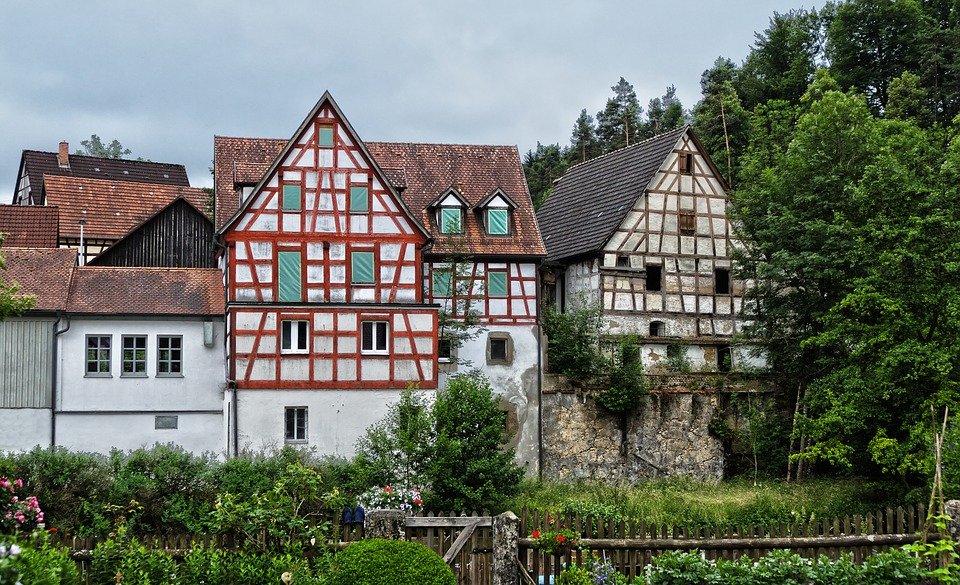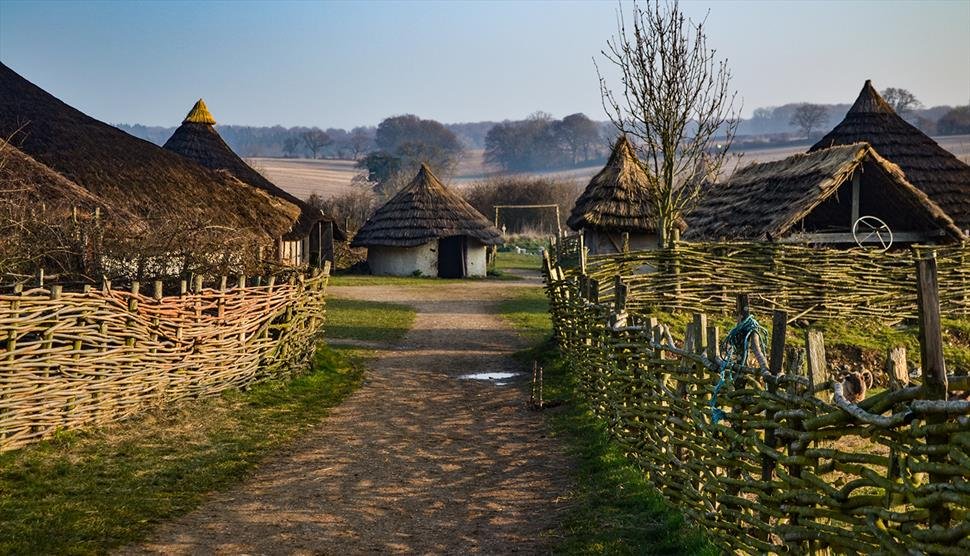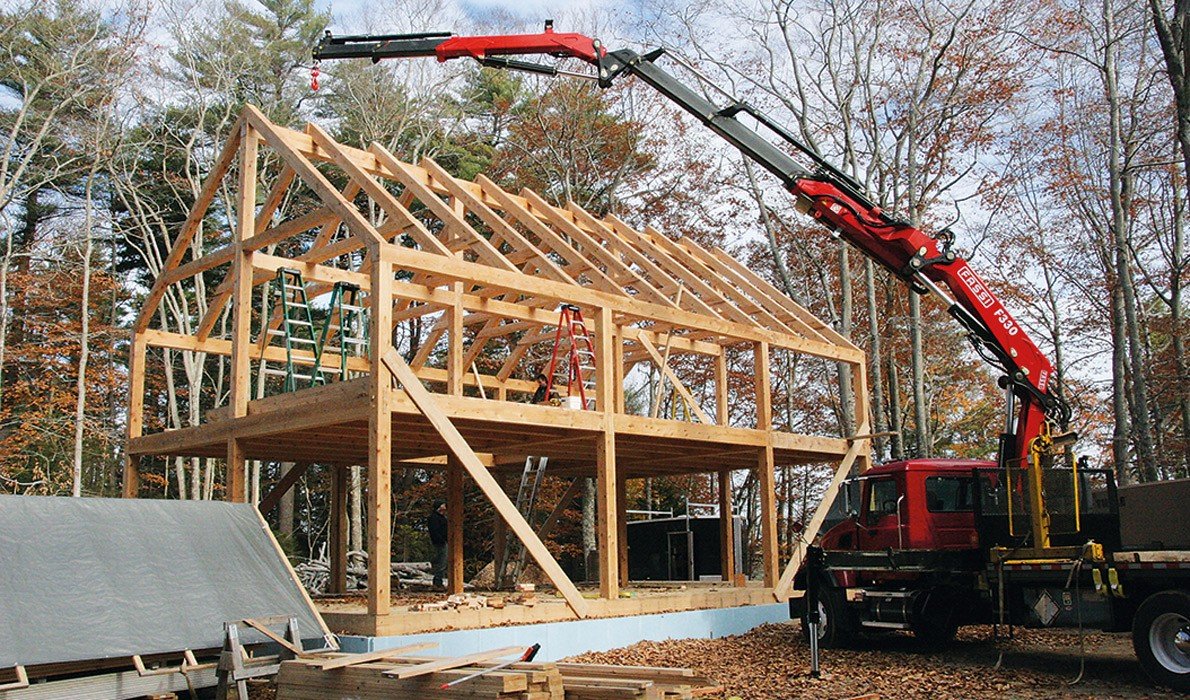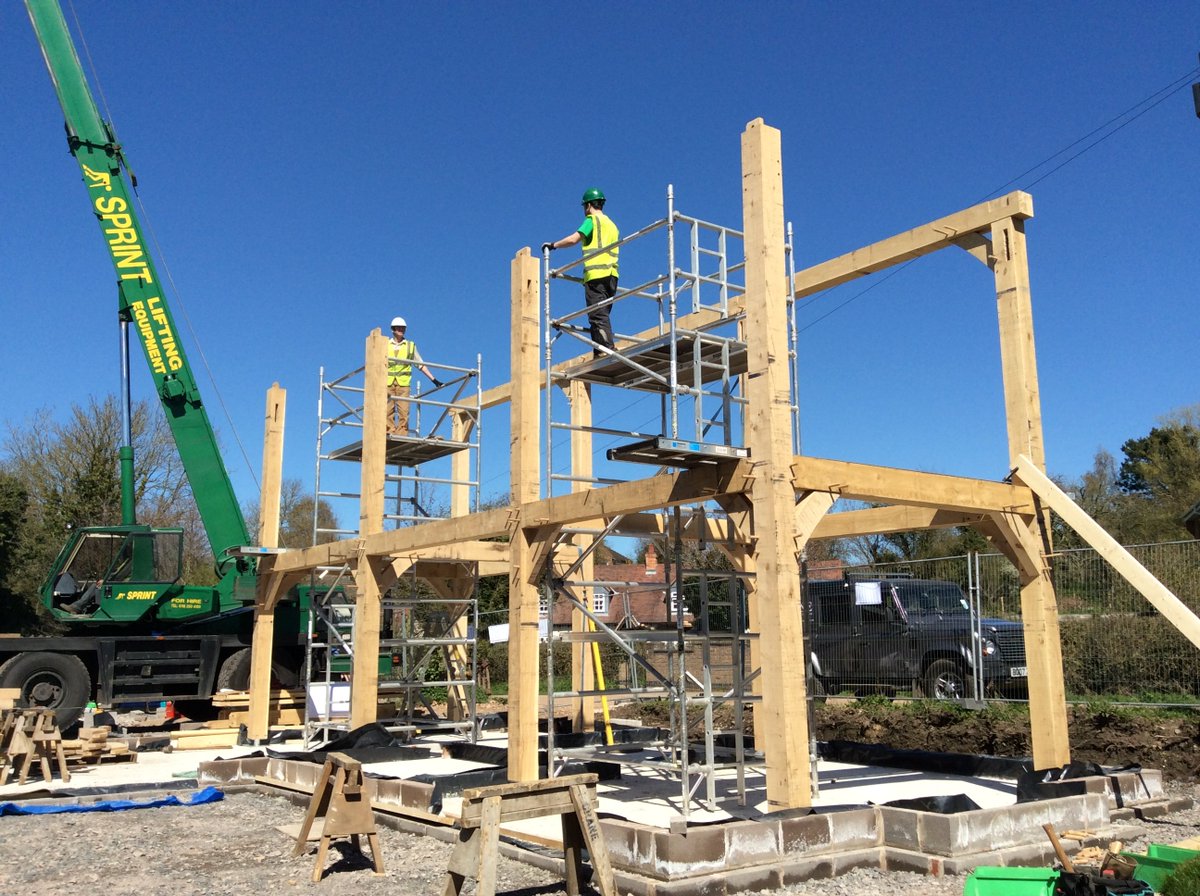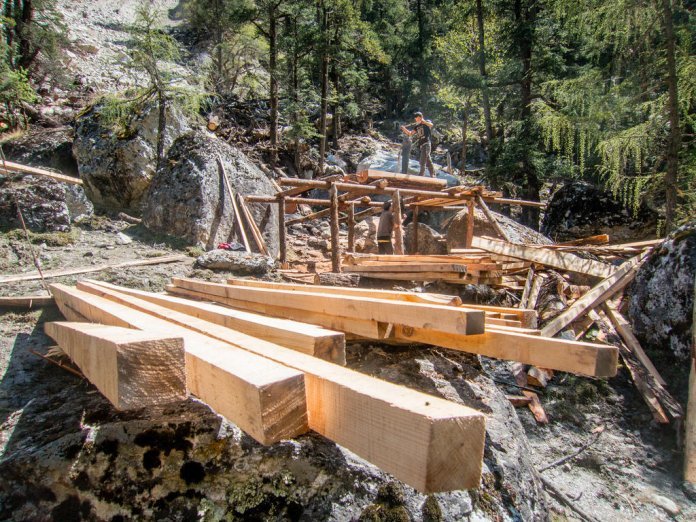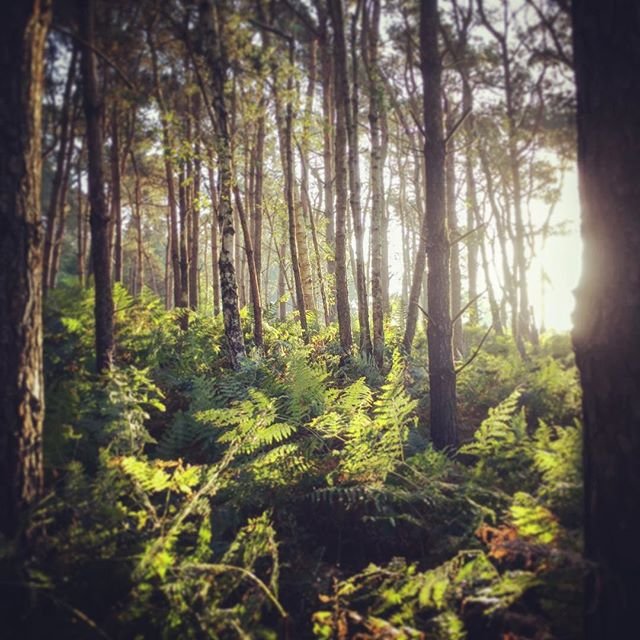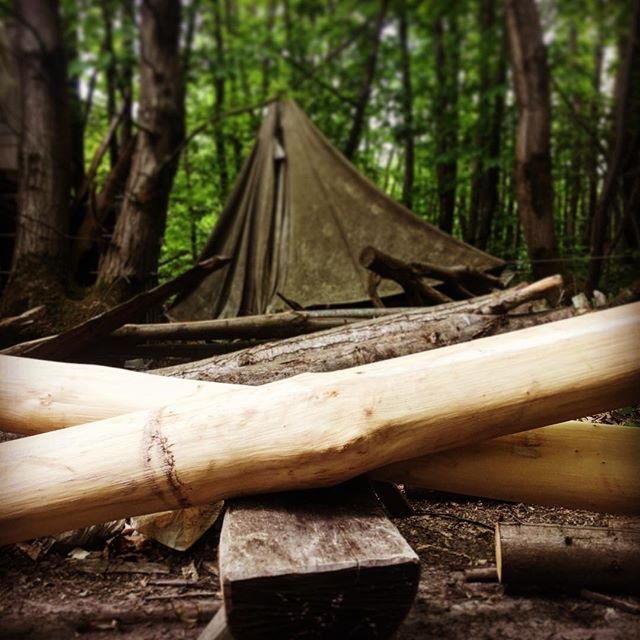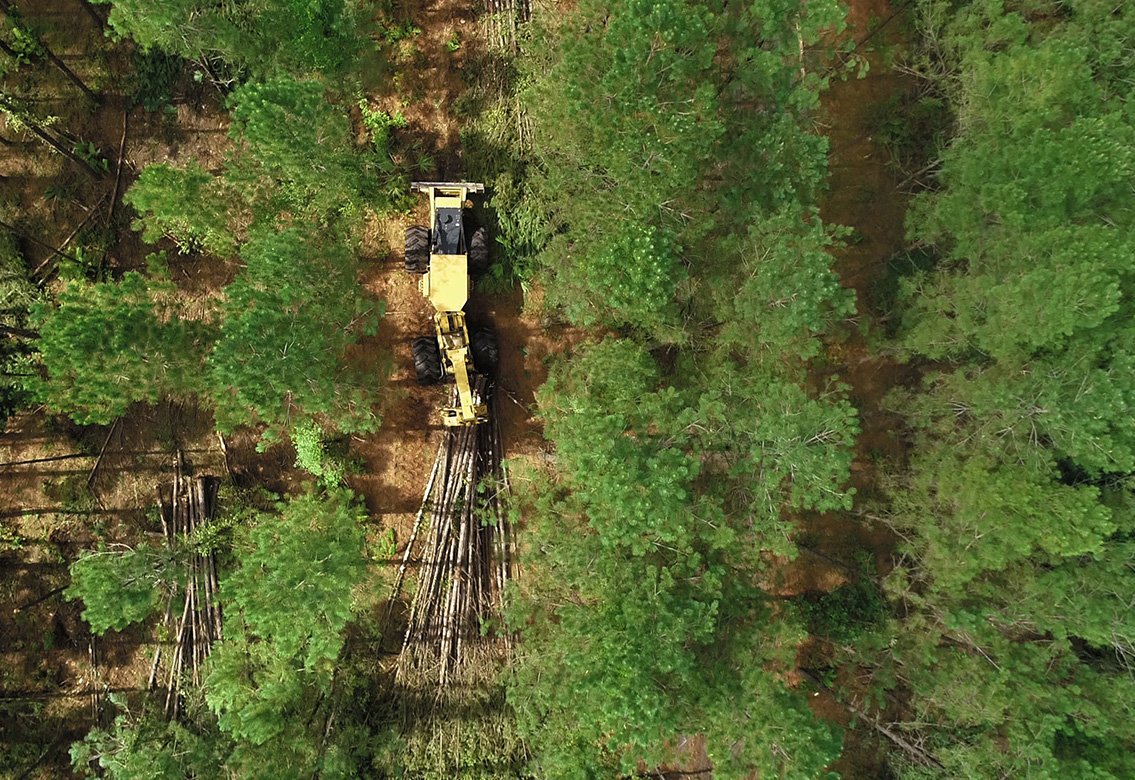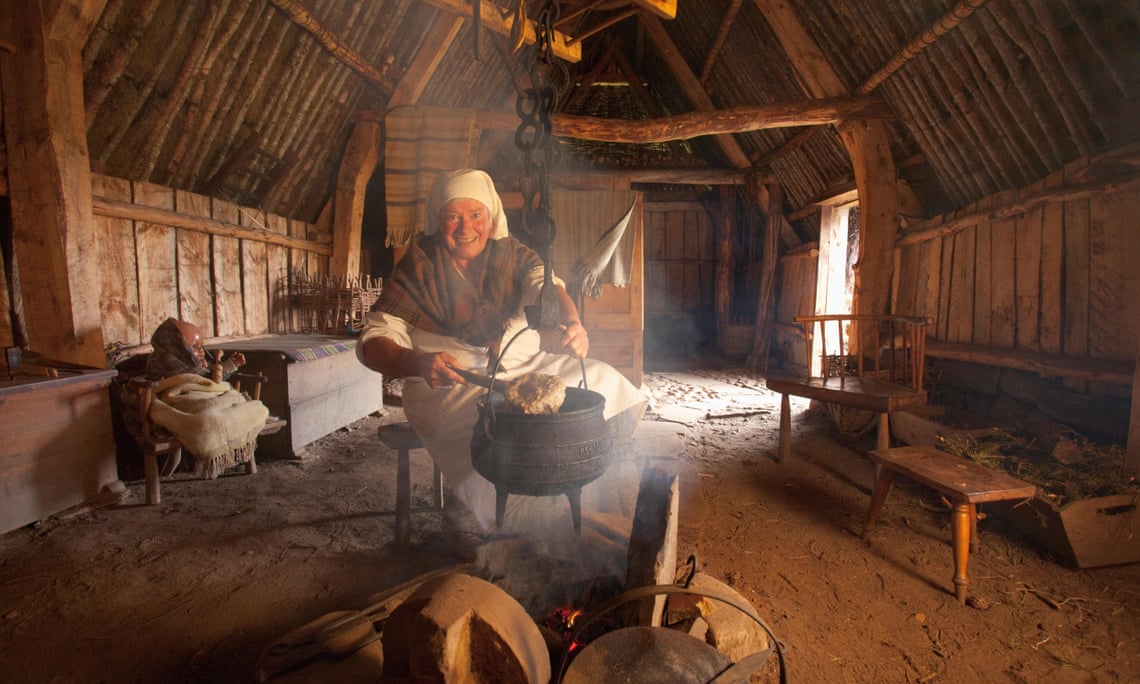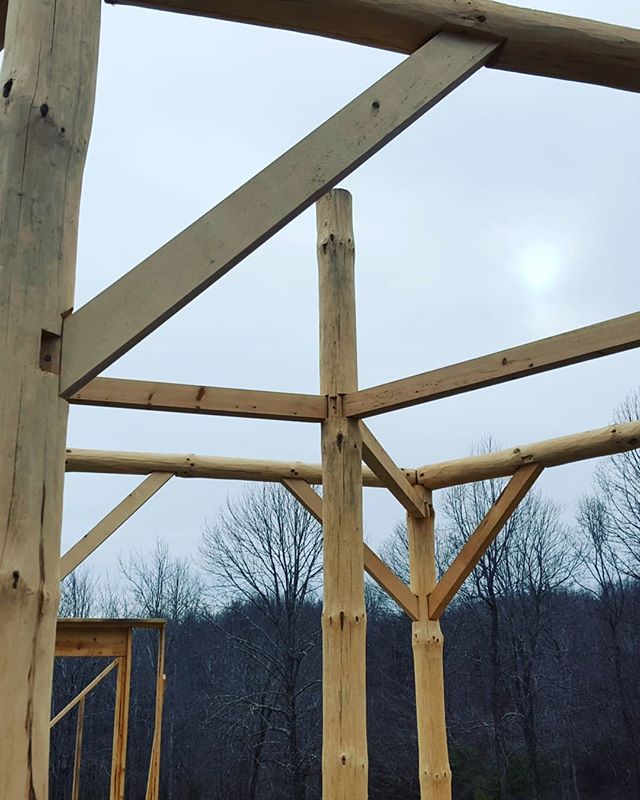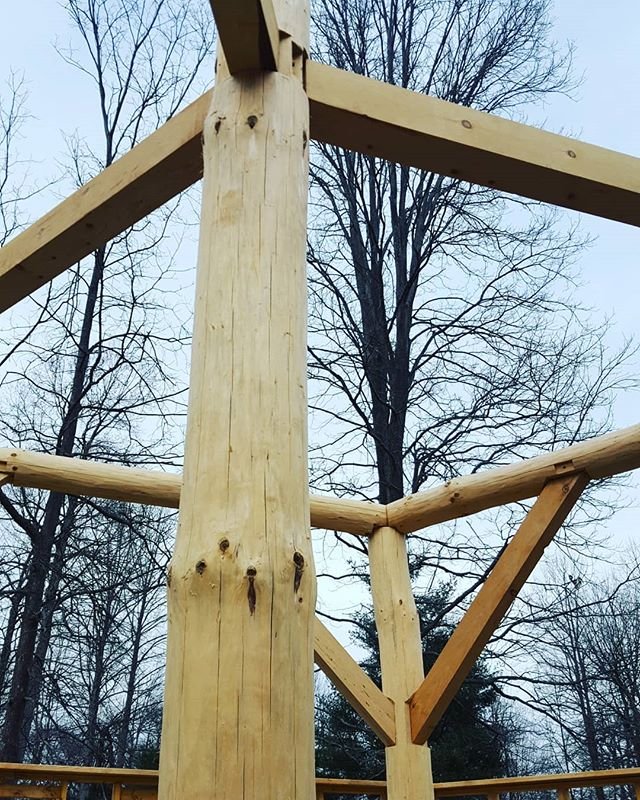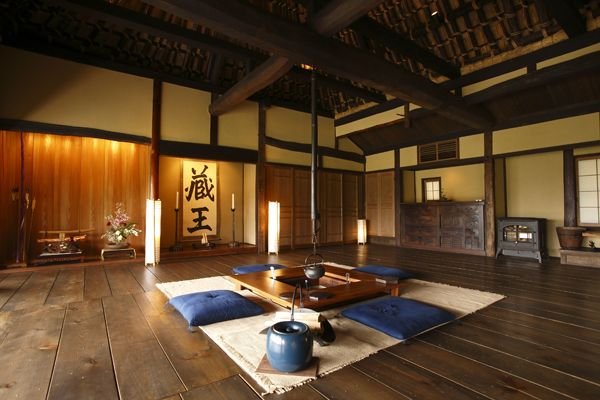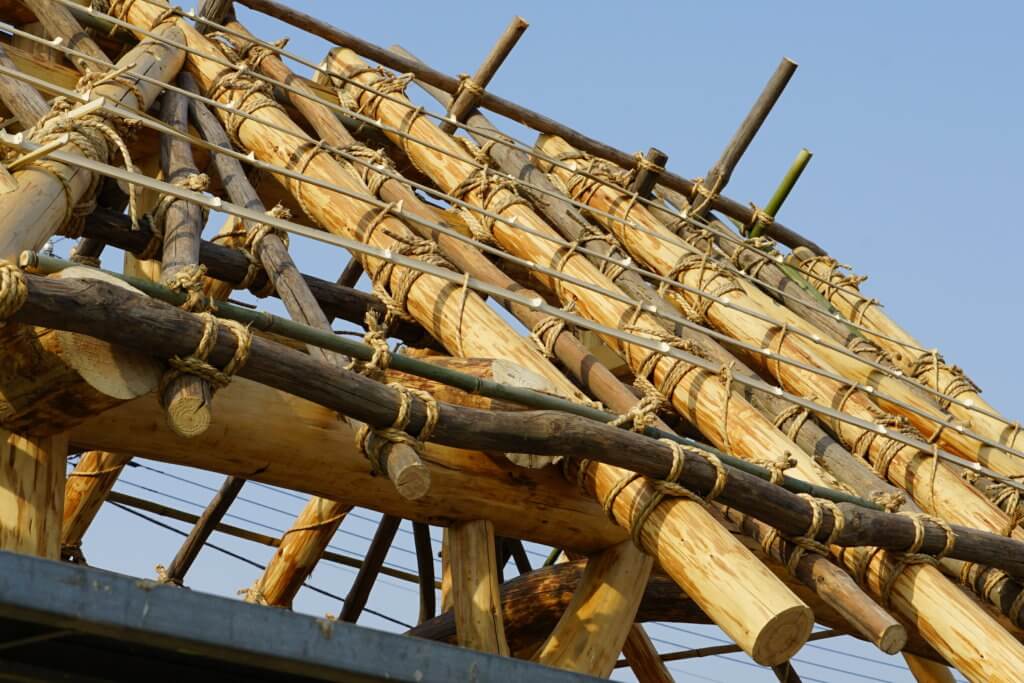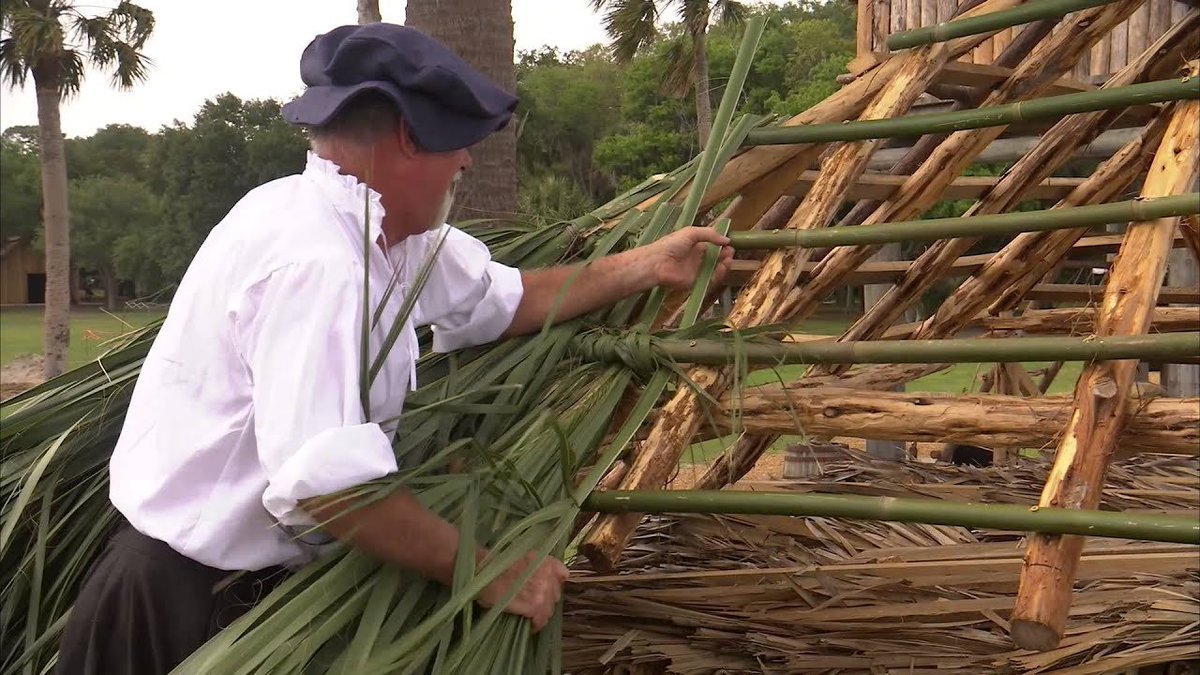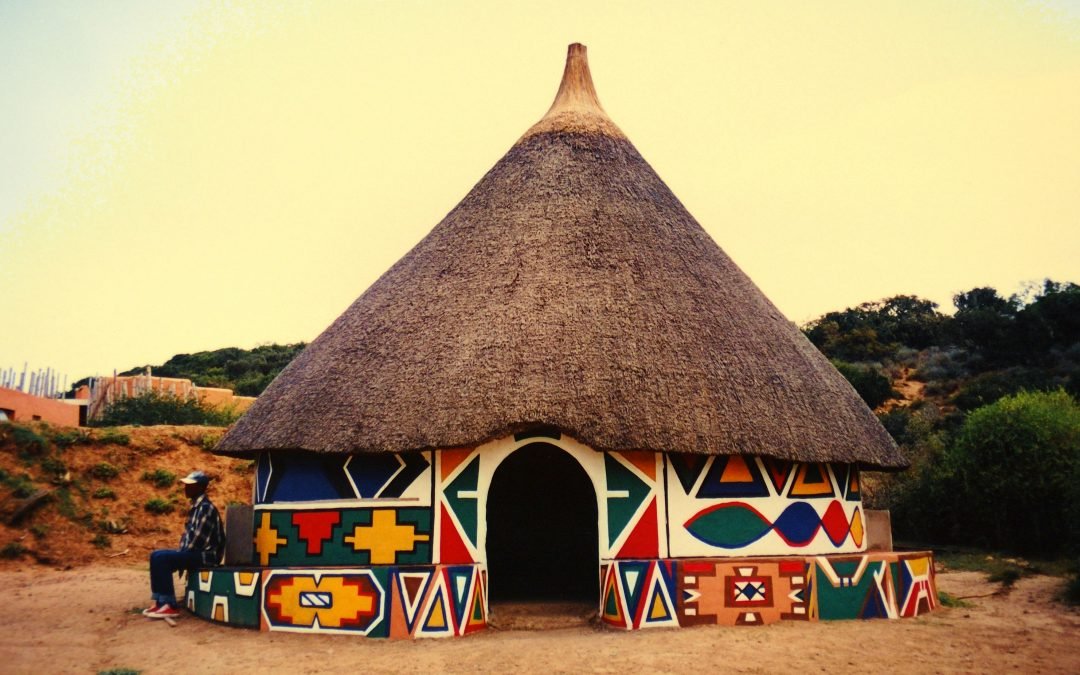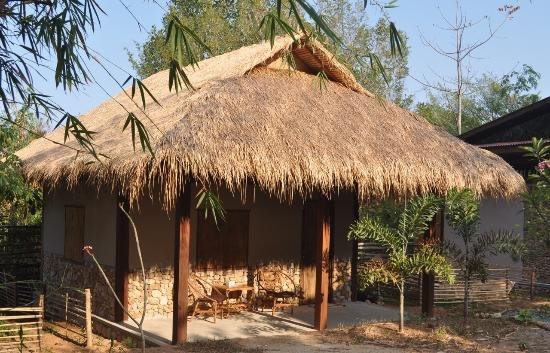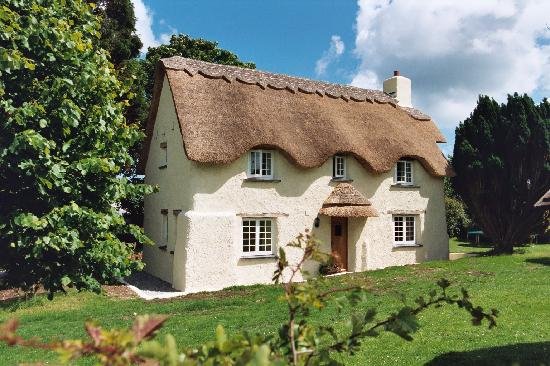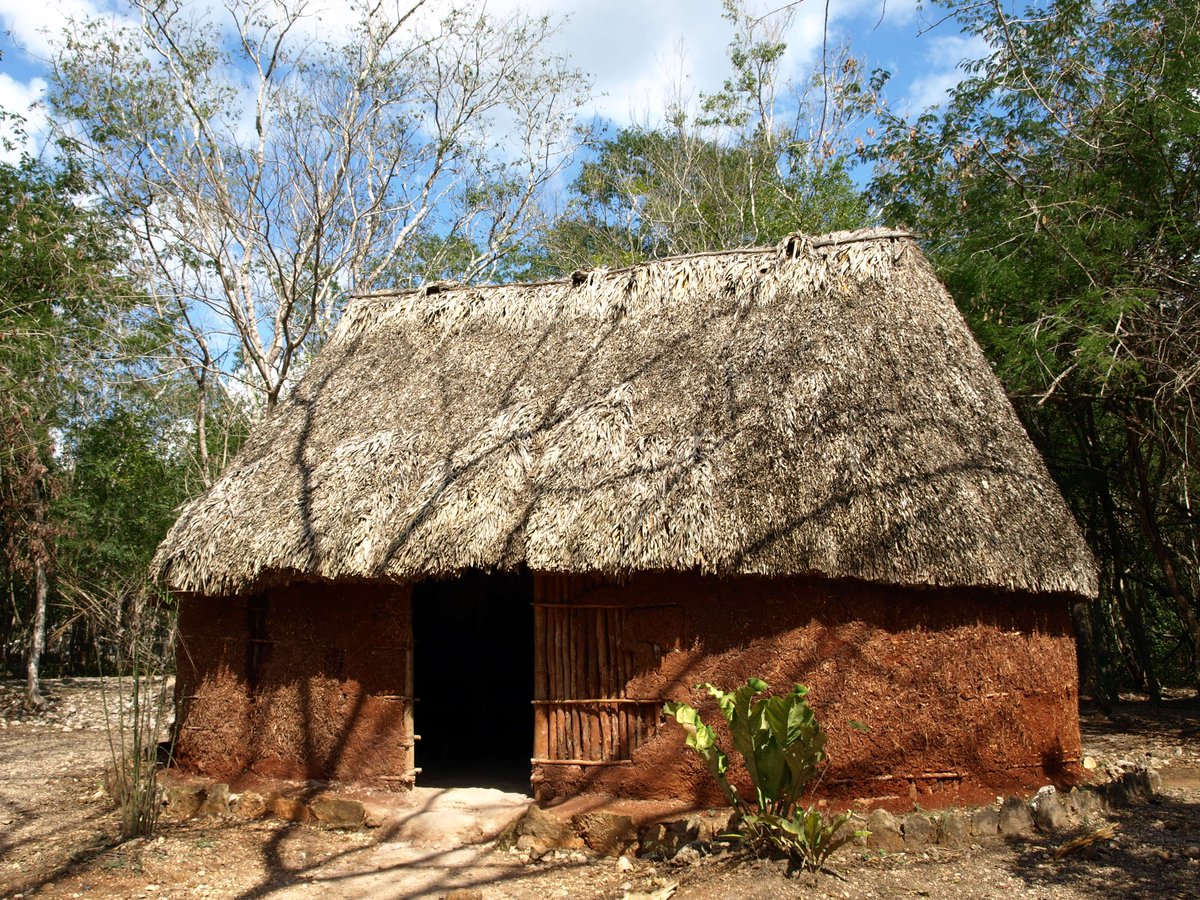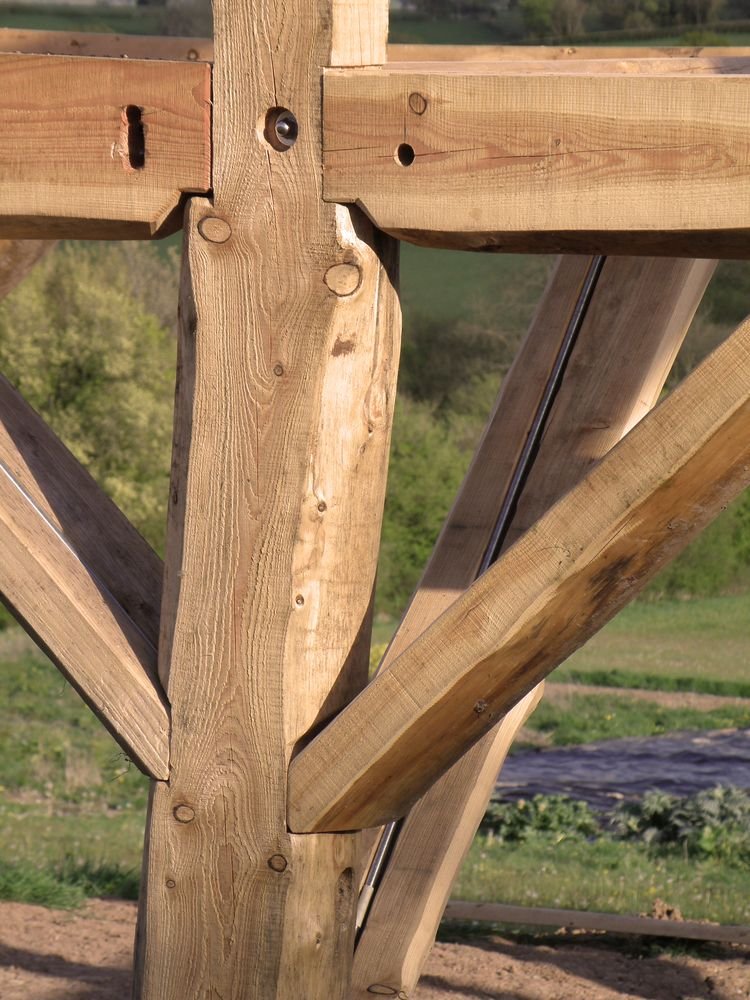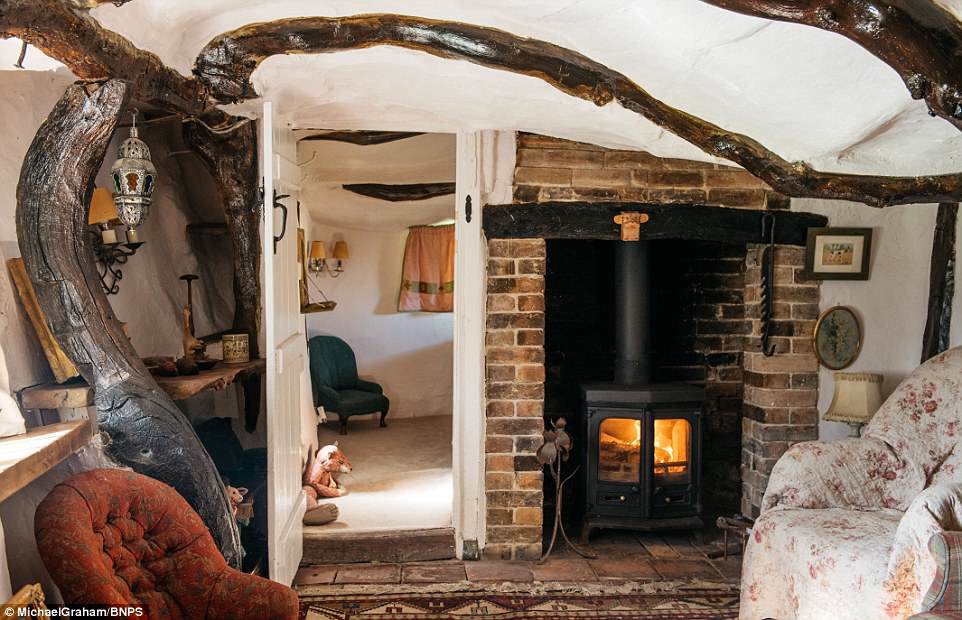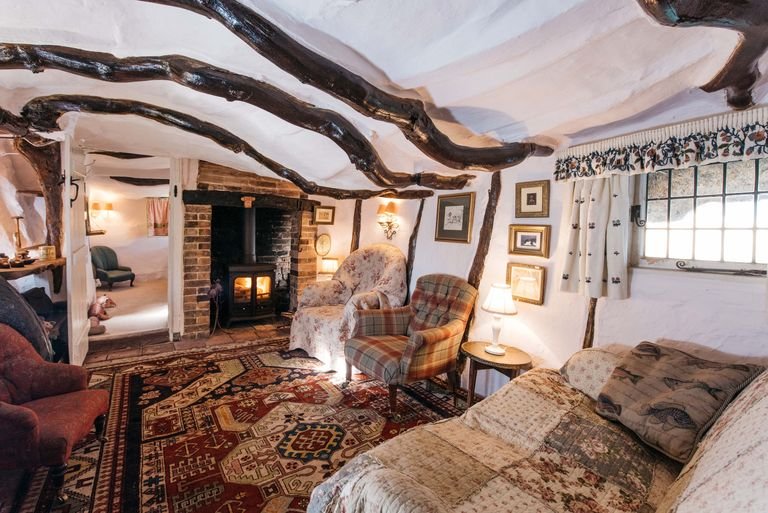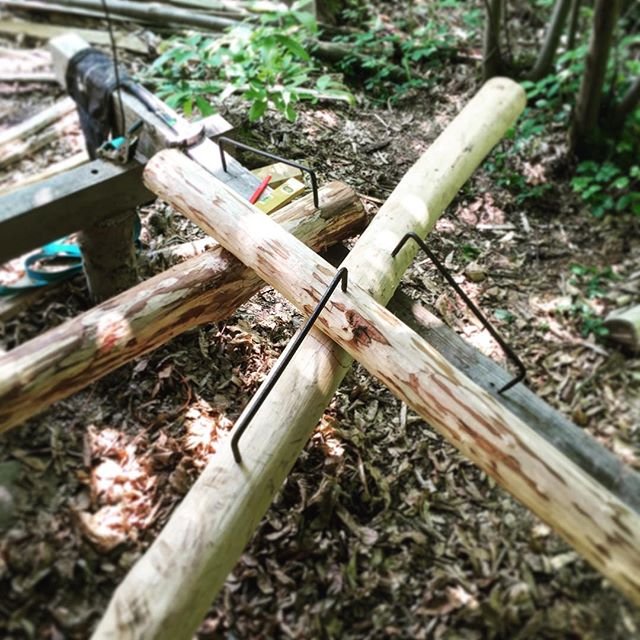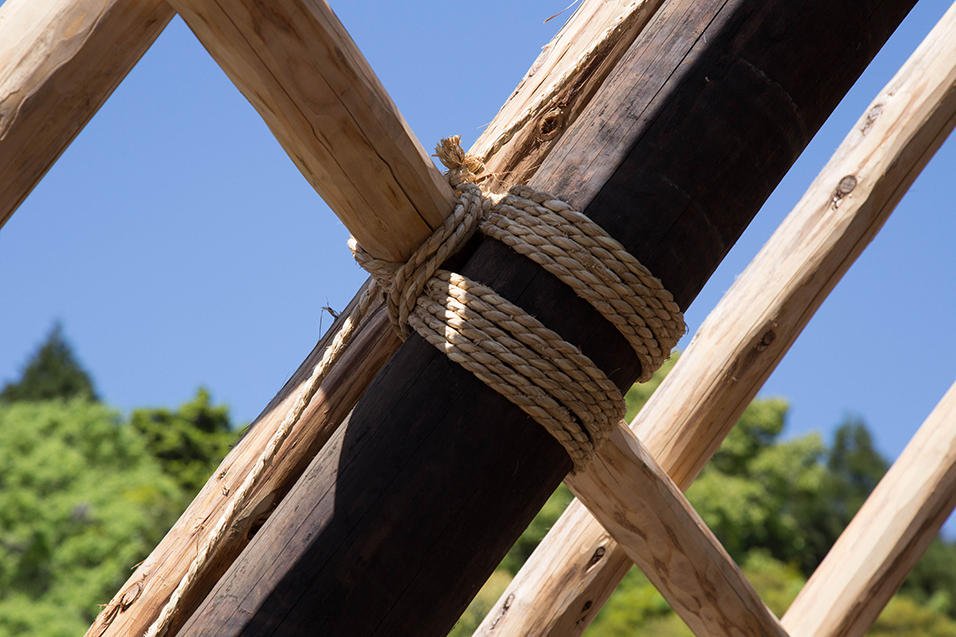Timber framing is by far the most ecologically sustainable and economical way of building homes in the widest range of climates, but even inside the category of timber framing (fachwerkhaus, colombage tudor style etc) there's something even more sustainable: round pole timber. —>
Timber frame traditionally uses mature trees sawn to give square lumber of predetermined sizes. It is good use of wood, but there's quite a bit of waste, the trees are heavy and needs machines or horses to transport, and today most building sites use heavy machinery to handle it.
Trees used for traditional timber framing takes a long time to mature, 40-80 years usually, and they are cut when they are becoming their most useful and productive (mature trees grow much faster and store more carbon than young trees). Lumber, while still cheap, isn't free.
Our ancestors knew how to work around these problems: they used pole timber, which grows faster (4-12 years), is a by-product of forestry, far far stronger than cut lumber (so they could build more and bigger with less) and it is easier to handle for individuals by hand.
In modern forestry only one out of four trees planted actually mature. The rest is cut in "thinnings", and in most countries it is an expensive undertaking with the cut trees left to rot, or used for pulp or firewood. So most forest owners are happy to give it away for free.
These "thinnings", or round pole timber, is perfect for use in all forms of building projects, from gigantic barns to fences to homes. They require no mechanical processing and can be handled by hand by individuals. Maximum strength and versatility at an unbeatable price.
Technically they are not much different from normal timber framing, maybe a little easier to learn and handle for the beginner (not least because if you make a mistake you can use it for firewood), and can also be easily combined with square traditionally cut lumber.
In Japan pole timber is still used for roofs and ceilings especially, and in a way that requires almost no skill, no cutting, no tools, no complicated joinery: just tie it up with hemp ropes. It will last centuries if kept dry.
And it is perfect with thatched roofs: all other roofing materials require relatively flat rafters and roof boards, no matter what you do you can't lay roof tiles or roofing felt on rafters and battens tied up with rope on gnarly round pole timber. Our ancestors were no dummies.
An intermediary between round pole timber and cut traditional square timber is the whole limb timber framing, using as much of the trees, crooks and bends and all, for maximum efficiency and strength. It can be be combined with almost any other material.
Out of all forms of timber framing, the crooked timber is probably the strongest. Uncut timber is about twice as strong as cut lumber and once in place it'll grow even stronger as it dries completely. Here's a hovel from the 11th c., mentioned in the Doomsday Book of 1086 A.D.
If you are daunted by regular timber framing, try out round pole timber instead, at least for the higher bits and places, like roofs. And if even pole timber is too much, take out the hatchet and start working on your cordwood home. The easiest building method of them all.

 Read on Twitter
Read on Twitter